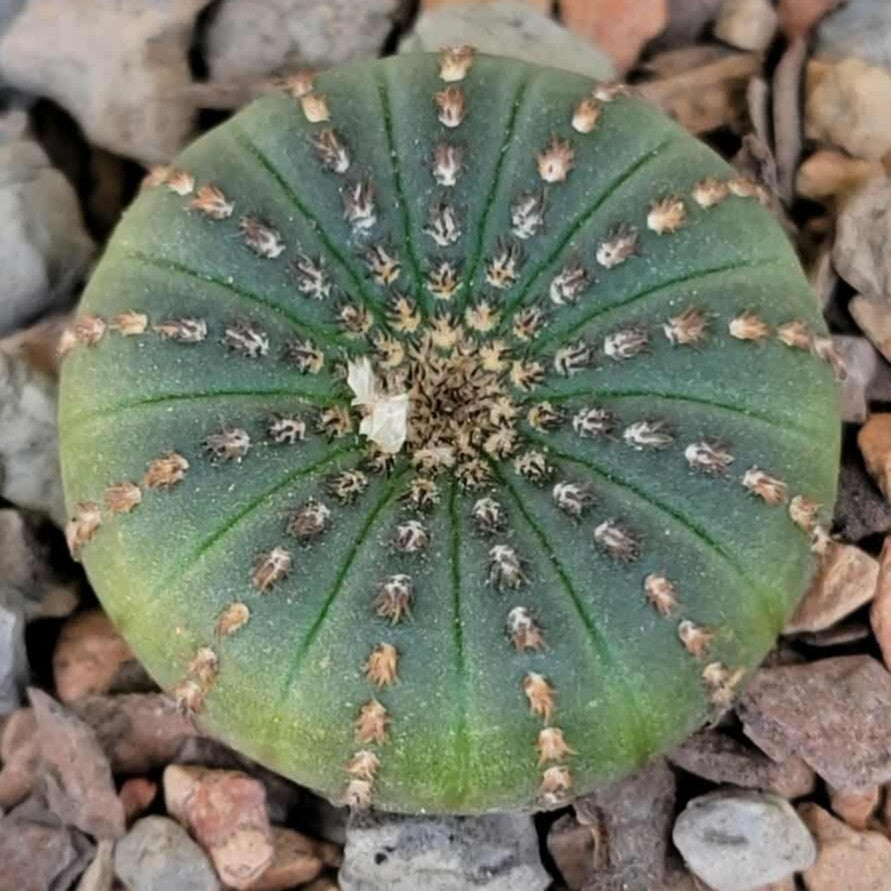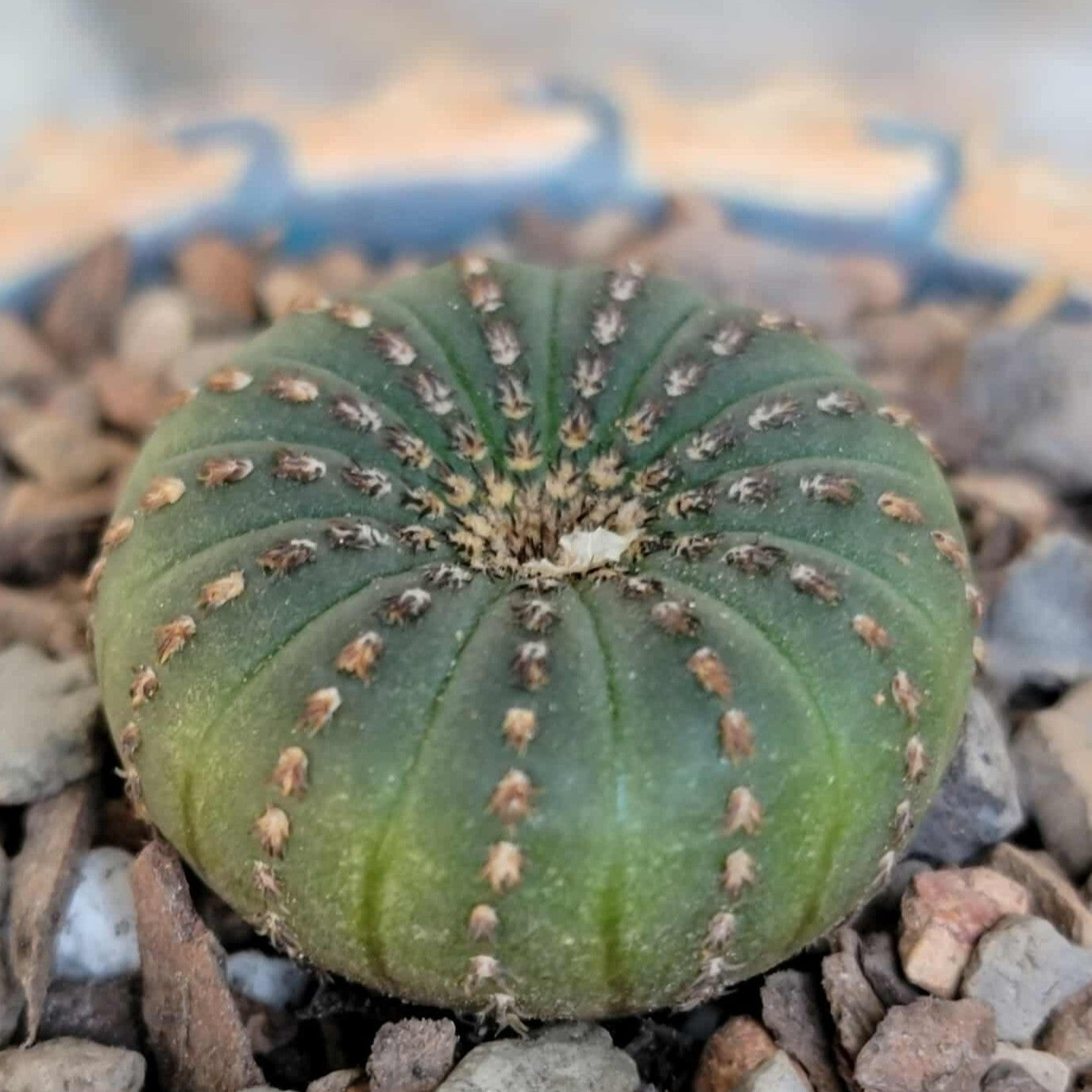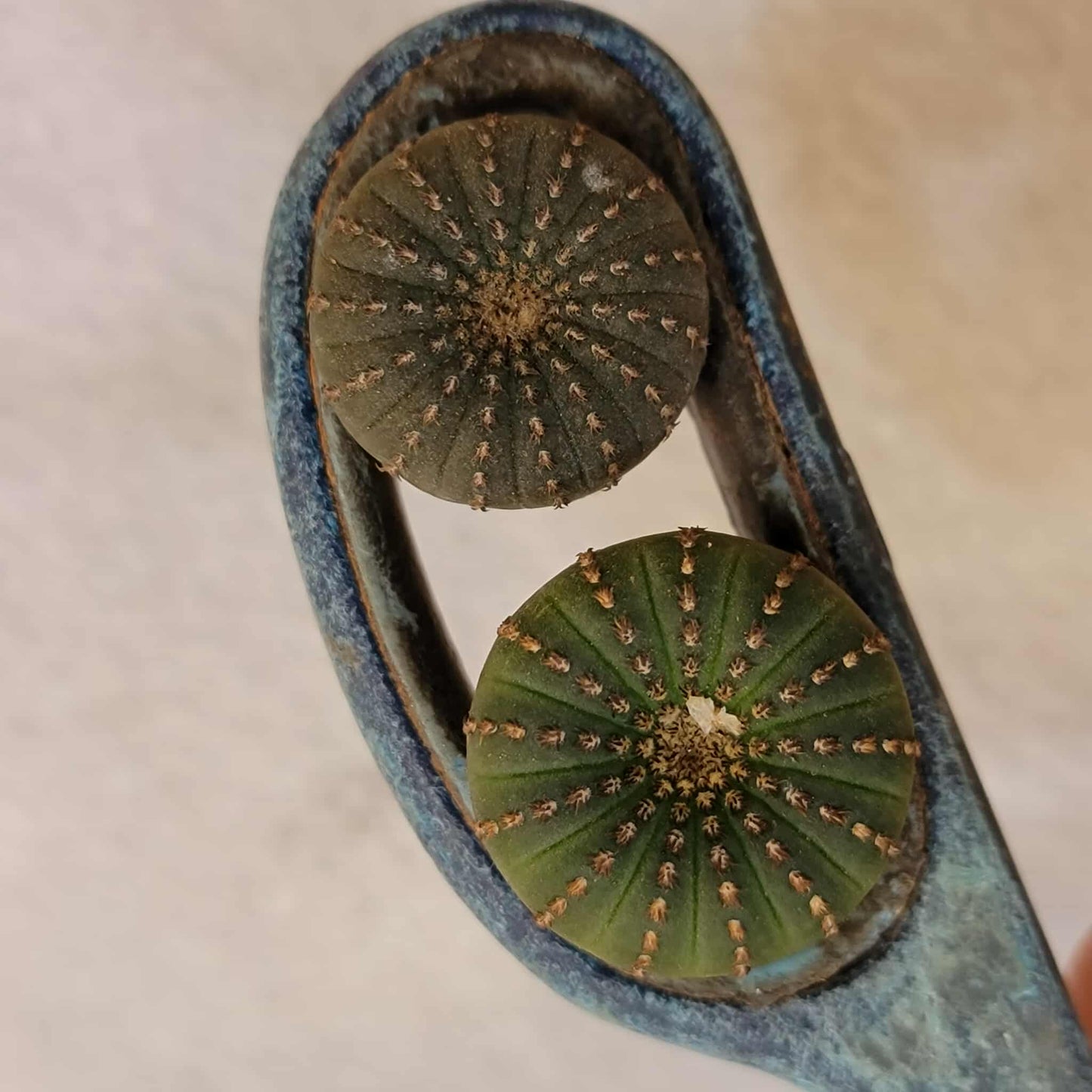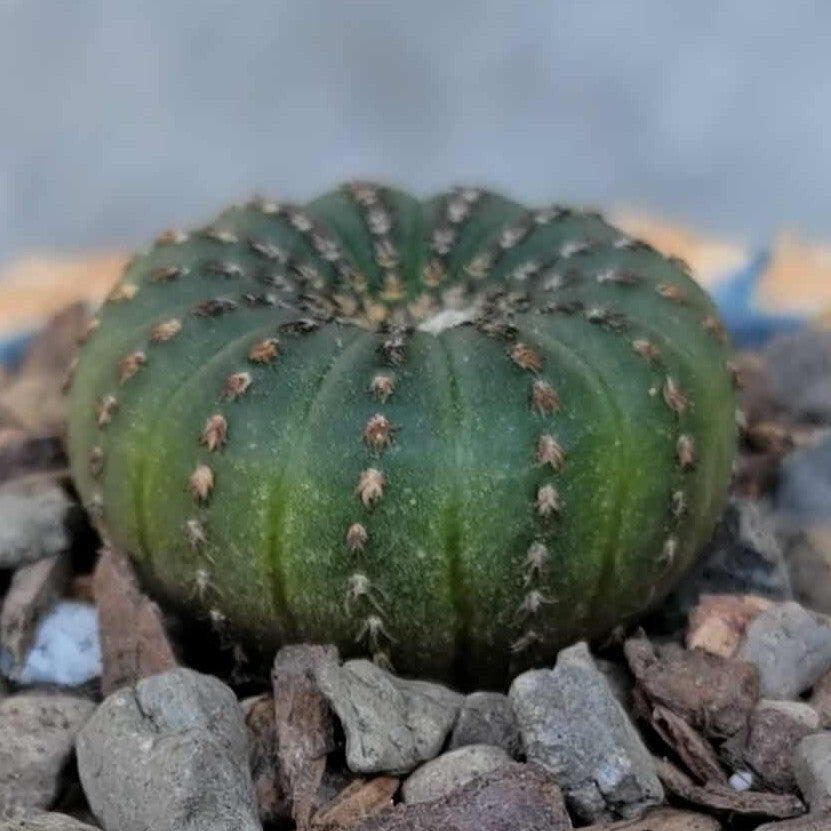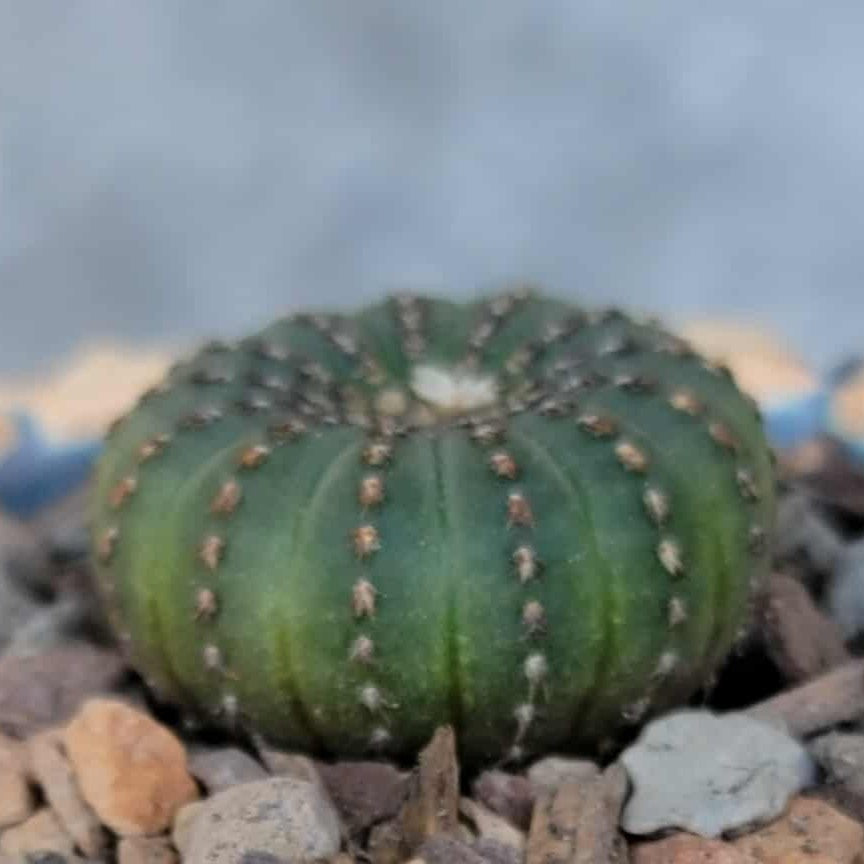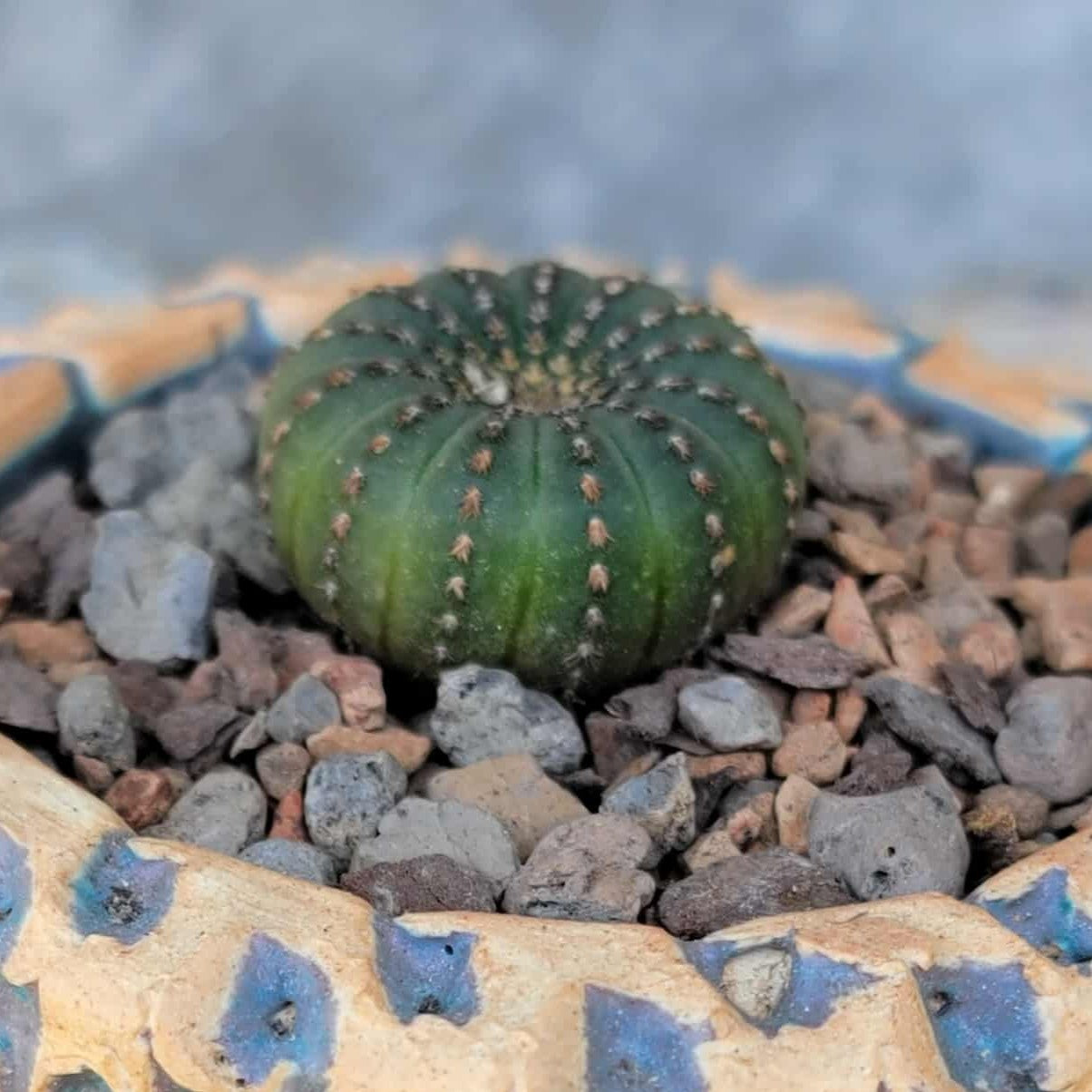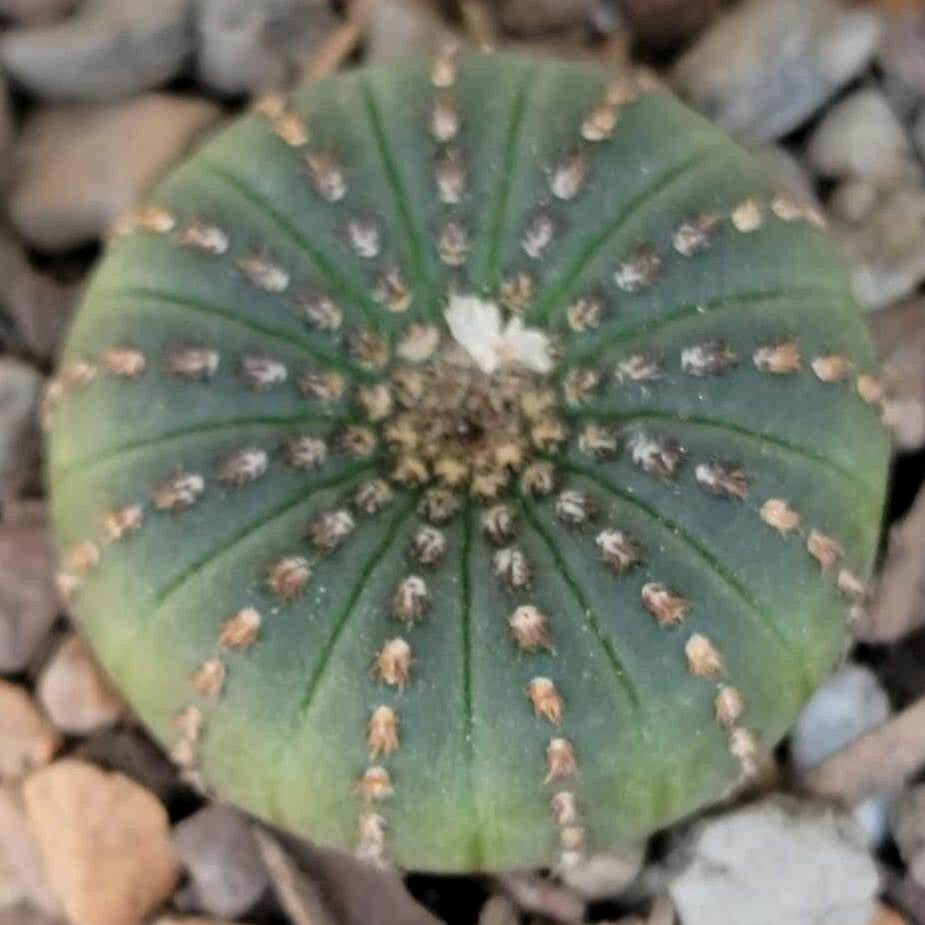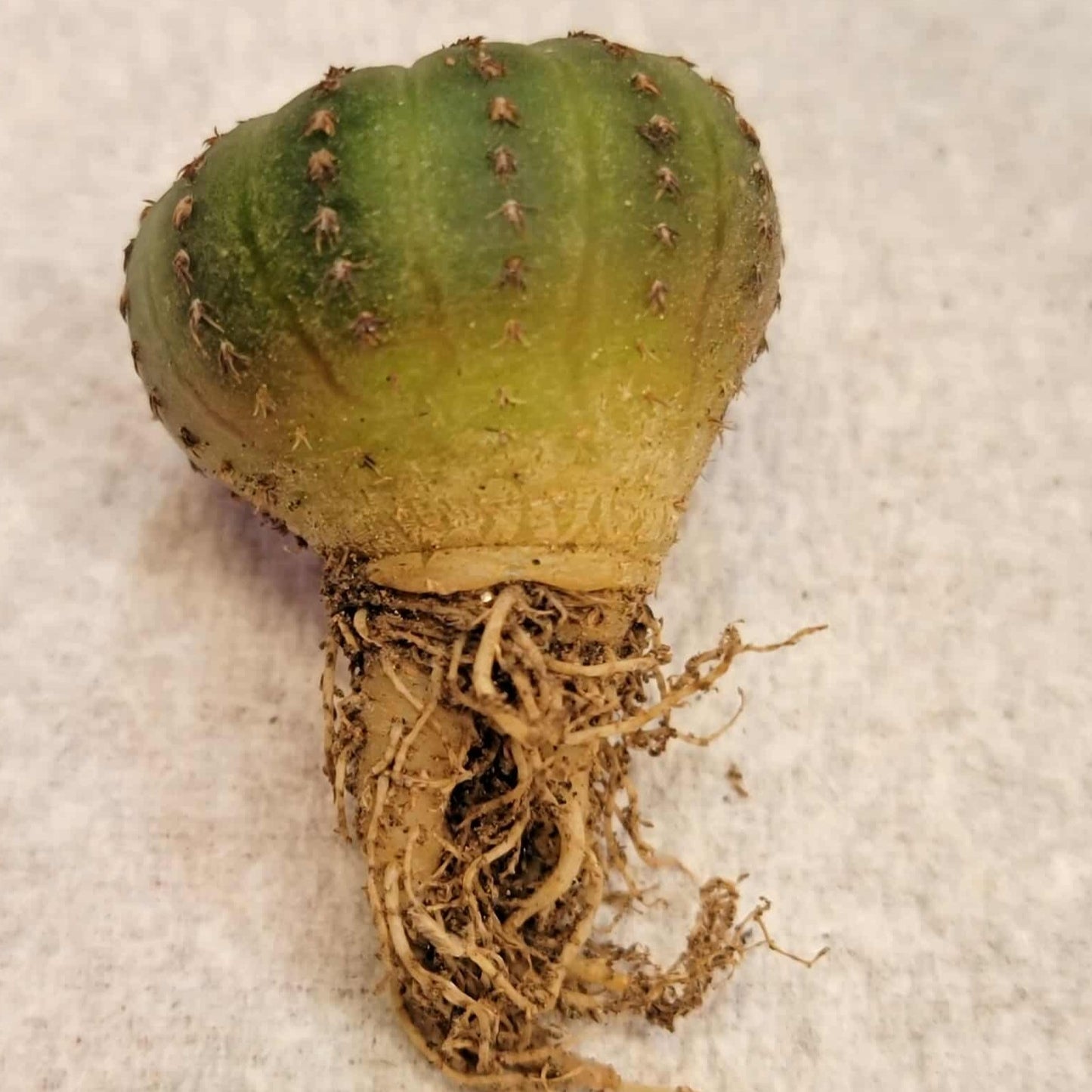Shangri-Ha Cactus Ranch
Frailea asterioides
Frailea asterioides
Couldn't load pickup availability
Frailea asterioides
Do you have any frailea in your collection?!
These little cuties measure approximately 1" wide.
Showcased here in one-of-a-kind handmade pottery (sold separately).
Will be shipped bare root.
Frailea asterioides, also known as Frailea castanea, is a captivating miniature cactus cherished by succulent enthusiasts. It's native to South America, specifically southern Brazil and northern Uruguay, where it thrives in rocky outcrops and stony fields.
Here's what makes it unique:
· Diminutive Size: Frailea asterioides is incredibly small, typically reaching only 1-2 inches (2.5-5 cm) in diameter, and rarely exceeding 2 inches.
· Distinctive Appearance: The stem is disk-like and flattened, boasting a chocolate brown or dark reddish-green hue with 8-15 flat ribs. Minute, short, black spider-like spines are pressed against the plant body.
· Cleistogamous Flowers: It produces small, sulfur-yellow flowers that can even be larger than the plant itself (up to 4 cm in diameter). However, the flowers are often cleistogamous, meaning they self-pollinate without fully opening. They will open quickly when exposed to sunlight, but only at sustained temperatures above 90° F.
· Self-Fertilization: Frailea asterioides is known to self-fertilize, even if the flower doesn't open.
· Habitat: These cacti are found in scattered populations in grasslands, stony fields, and rocky crevices, often between pebbles or in shallow, gravelly soil.
Care and Growing Tips
· Soil: Frailea asterioides requires well-drained, non-organic soil. Some growers find a higher organic content acceptable in specific climates like Southern Arizona, while others prefer a super gritty mix.
· Watering: Water sparingly from March to October, allowing the soil to dry completely between waterings (approximately once per week or two weeks). During winter dormancy, water very little. Avoid overwatering, as the thin, fibrous roots are susceptible to rot in humid conditions.
· Sunlight: This cactus thrives in full sun but can tolerate light shade. Direct sunlight brings out richer and darker colors. If grown in the shade, the plant grows faster but may not be flat-shaped or dark-colored. It's crucial to acclimate new plants to strong light gradually over a few weeks.
· Hardiness: Frailea asterioides needs a minimum temperature of 5-10°C (41-50°F), but can tolerate occasional drops below freezing if kept dry before and during cold weather. It's crucial to maintain a dry environment during the winter resting phase to prevent rot.
· Propagation: It is typically propagated with fresh seeds. Seedlings need frequent repotting in their early years and dislike strong light or dry conditions.
· Threats: In its native habitat, this species faces threats from grazing and trampling by cattle, agriculture, forestry, fires, and collection.
